Grocery has always been reluctant to embrace online advertising, and now the Cambridge Analytica scandal has raised further questions about digital ethics. So how are brands and retailers reacting?
Social media giant Facebook watched helplessly last month as its share price plummeted, amid allegations that personal user data had been harvested without permission during both the US elections and EU referendum, helping to spread fake news on to our news feeds.
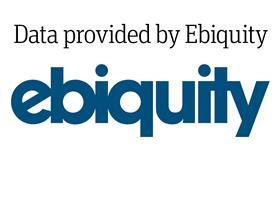
Within days, as irate politicians and press outlets demanded answers from founder Mark Zuckerberg, major advertisers were threatening to pull their cash from the site too. Claims of “covert, micro-targeted” advertising using private data “without explicit, informed user consent” were “deeply concerning,” said UK advertising body ISBA, which represents 3,000 brands across retail, fmcg, finance and charity, as it held crisis talks with the platform.
Advertising spend: Top 100 fmcg brands
For all that it centred on electioneering, the scandal also cast a deeply unflattering spotlight on the dark side of digital advertising, panicking marketers at some of the world’s biggest brands, coming as it did only months after extremist content had sat side by side with their marketing campaigns on YouTube.
For some of ISBA’s most powerful members, concerns about the “dark side” of digital advertising have been raging for some time. On the positive side, P&G chief brand officer Marc Pritchard had told audiences in 2017 that the constraints of “limited formats and change at a snail’s pace” had been replaced by “freedom to spread our wings, to venture where no creative has been before [and] at lightning speed”.
Most complained about ads
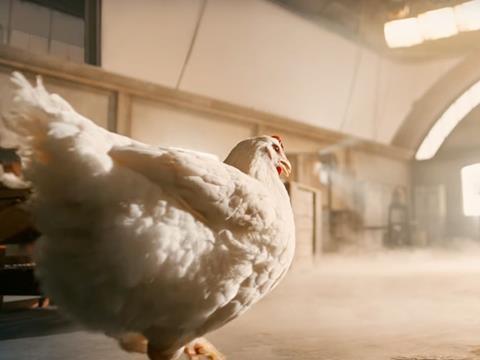
1. KFC - 755 complaints
Plant-based political correctness went slightly potty in July with 755 complaints about this KFC ad featuring a chicken bobbing to a rap soundtrack. Critics said it was “disrespectful” to chickens and distressing for vegetarians and vegans as the chicken was heading for the slaughterhouse. But it wasn’t explicit enough to warrant banning it, found the ASA, which didn’t uphold the complaints.
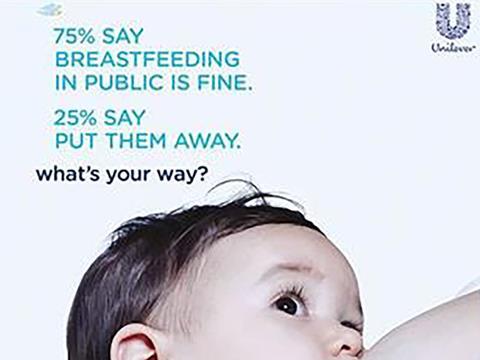
2. Dove - 391 complaints
Unilever acted fast when a barrage of 391 complaints followed the launch its new Dove baby campaign in July, removing the offending ads before the ASA could even investigate. Complaints said the ads, which contained stats and opinions about breastfeeding in public, encouraged criticism of breastfeeding, while others claimed they encouraged parents to neglect crying babies.

3. McDonald’s - 256 complaints
The fast food chain came under fire in May for a TV ad featuring a mother sharing stories with her son of his dead father, ending on their shared love of its Filet-O-Fish burger. The ad trivialised grief, said the 256 people that lodged complaints, and was likely to cause distress to those recently bereaved. Before the ASA could investigate, the chain issued an apology and pulled the ad.
“But there’s a dark side,” he admitted. “We serve ads to consumers through a non-transparent media supply chain with spotty compliance to common standards, unreliable measurement, hidden rebates and new inventions like bot and methbot fraud.
“I confess P&G believed the myth we could be a ‘first mover’ on all of the latest shiny objects, despite the lack of standards and verification,” he added. “We accepted multiple viewability metrics, publisher self-reporting with no verification, outdated agency contracts, and fraud threats – with the somewhat delusional thought that digital is different and we were getting ahead of the digital curve. We’ve come to our senses.”
Digital detox
For P&G that has meant poring over every one of its agency contracts in the past year and slashing spend by a reported $200m globally in a bid to tackle bots and brand safety online, with that money reinvested into TV and radio. The digital detox, Pritchard reported last month, saw the brand owner eliminate 20% of its ineffective online marketing – and increase reach by 10%.
It’s not alone in reviewing its options. Though Unilever had not pulled its advertising from YouTube following last year’s terror ad scandal, in February, it threatened to withdraw its advertising from both Google and Facebook (which account for 61% of all online ad spend in the UK) with chief marketing officer Keith Weed accusing the platforms of being “little better than a swamp in terms of transparency”.
Advertising spend: retailers
“As one of the largest advertisers in the world, we cannot have an environment where our consumers don’t trust what they see online.” And that was before the Cambridge Analytica story reared its head.
All this doubt is filtering down the food chain. “Both P&G and Unilever have previously invested a lot of money in digital and now they’re expressing serious concerns about what people have described as the wild west nature of some of the practises in the online space,” says Andy Nairn, founding partner at Lucky Generals. “The fact that the world’s two biggest advertisers have been very tough about this means others are following suit, and Google and Facebook will start to lose revenues. That’ll get their attention.”
If it hasn’t already. Though digital advertising spend is notoriously difficult to track, a look at the advertising spend of the top 100 fmcg brands and 10 biggest retailers in the past 12 months on traditional media, compiled exclusively for The Grocer by Ebiquity, hardly points to an industry going wild for digital.
Spend by fmcg brands on traditional advertising channels, which includes TV, print, cinema and radio, has gone down by £136m (or 9%) to £1.38bn – its lowest level in 12 years – with retail also down £18m (or 1.2%) to £1.81bn. So the trend is downward. But the 100 biggest-spending brands bucked this trend, hiking spend on traditional channels by 20%.
Even where spend has been curbed this might simply point to smaller marketing budgets overall “which are being sliced as businesses make efficiencies,” says Jonathan Trimble, CEO at 18 Feet & Rising. “There’s more pressure and competition.” In fact, the Institute of Practitioners in Advertising’s latest report found only 8.6% of companies had increased spend in the final quarter of 2017, the lowest levels in two years.
And even if we assume that every penny removed from traditional advertising channels in the past decade has been transferred to digital, that would still only amount to £139m extra being spent between 2008 and 2017 – a mere doubling of budget moved from traditional channels to online.
Compare that with the meteoric acceleration of our use of internet, social media and smartphones in the same period (with two-thirds of the world now online, 3.2 billion people on social media and five billion using mobiles, according to marketers Kepios) and it’s clear the industry is holding back.
Advertising spend: brand owners
For Nairn, digital simply hasn’t panned out as promised for marketers. “The promise was that it would be incredibly accountable and it’s been shown to be the opposite: it’s less accountable than traditional media. It was going to be an antidote to interruptions as TV was criticised for forcing its way into people’s lives and this was to be voluntarily consumed, but again the opposite is true as there’s a lot of clutter and re-targeted pop-ups, which is even more irritating. And social was going to be a free media, with people passing on your message for you via viral marketing. But increasingly people have realised they need to put money behind it to get their message across.”
Brand safety
“Digital channels initially were probably oversold,” adds Lucy Markham, of media agency Bountiful Cow. “Everyone got so excited by the new technology that it was only seen in positive ways. Any channel has pros and cons, of course it does, but the shame for digital was it launched with people only seeing the pros, and now we’re only starting to recognise where some of the cons come in and trying to find ways to mitigate that.”
Which brings us back to brand safety. And if the most recent focus has been on concerns over privacy and data, just as serious to advertisers is the prospect of having their brands associated with terrorism and hate crime. As Nairn says: “You’ve got your 100-year-old brand, which has taken decades to nurture and build and gain trust with, and all of a sudden you find it’s in close proximity to all sorts of horrible stuff online.”
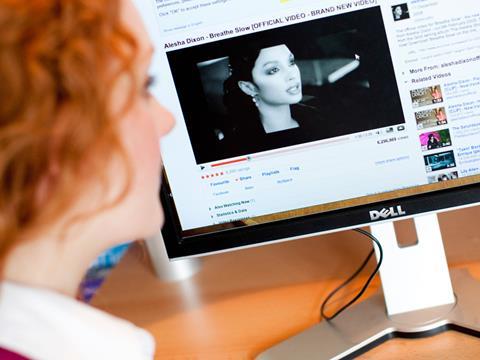
How YouTube plans to win back advertisers
Though the past month has seen Facebook under heavy scrutiny for the use of its data in campaigning, it was Google-owned YouTube that felt the most pressure from UK advertisers in 2017.
The platform reportedly lost millions in revenues in March as controversy erupted over marketing for major brands appearing alongside unexpected content, including terrorist propaganda and paedophilia, with M&S, Starbucks and Walmart all joining in an advertising boycott against the platform.
With its reputation severely damaged by the furore, in December, YouTube announced its plan of action. In a blog post, CEO Susan Wojcicki said she recognised that “there can be another, more troubling, side of YouTube’s openness” with “some bad actors exploiting our openness to mislead, manipulate, harass or even harm”.
To tackle this, the platform began by employing teams to review existing extremist content, with more than two million examples reviewed in six months. Learnings were then taken from these to help ‘train’ machines to better track down similar content. As a result five times the amount of material can be reviewed and that improvement led to an additional 150,000 new videos removed from the site in the same period, Wojcicki added.
To ease advertising concerns the platform is also “planning to apply stricter criteria, conduct more manual curation, while also significantly ramping up our team of ad reviewers to ensure ads are only running where they should,” she said. “We will take the steps necessary to protect our community and ensure that YouTube continues to be a place where creators, advertisers, and viewers can thrive.”
Fears that ads appearing on YouTube were in fact funding terrorist organisations and neo-Nazi groups might not have affected Unilever, but that looks like luck as much as judgement, with McDonald’s, M&S, Sainsbury’s and Tesco all suspending investment in the channel in 2017, as part of a boycott, after brand ads were revealed to be flashing up alongside extremist content, amid outrage over the platform’s lame response to the airing of inappropriate videos.
In December the Google-owned platform announced its plan of action to ease advertisers’ misgivings (see box, p32) but for Chris Andrews of Bountiful Cow, “the sheer volume of content uploaded to these platforms is almost unmanageable”.
Dark marketing
“The platforms have taken significant steps but they were never designed to be advertising platforms, they were designed to be platforms to share information,” says Andrews. “They might have gone back to more human editors but how do you identify problematic content when there are reams and reams of data, uploaded every hour?” In other words, things will inevitably “slip through the cracks”.
Meanwhile, attention among advertisers has been refocused on the question of public trust, fuelled by the recent Cambridge Analytica story, and revelations around programmatic, targeted marketing made possible by data collected on social media.
So-called ‘dark marketing’ – in which highly fragmented, segmented, and targeted ads, made possible through the use of personal data – has become a “widely adopted” technique for fmcg brands, says Matt Thorne, co-founder and creative officer at Disrupt. This approach makes it difficult for consumers (or rivals) to see the entirety of the campaign.
“It’s kind of like Harry Potter wearing an invisibility cloak while telling different people different stories on why to order a certain drink in the Hogwarts lunch queue. As creepy as this is, it actually works really well, and speaks very directly and natively to the audience.”
Access to this “valuable, up-to-date customer data” is the big draw of digital, he adds. “We’re able to understand their basic demographics through to their hobbies, interests and even shopping preferences. This insight is gold dust for helping businesses engage with customers more effectively. It gives them hard facts as to how they can always ensure they are offering the right products at the right time on the right platforms.”
Advertising spend: fmcg sectors
Recent events will hamper access to these facts though. Last week Zuckerberg confirmed Facebook would now limit the data it makes available to advertisers, putting the kibosh on hyper-targeted marketing. And – perhaps more importantly for consumer facing brands – it’s unlikely the public will now look so kindly on businesses that stand to benefit from their data.
“It just feels like people are being manipulated to a point that we’ve crossed a line,” says Neil Davison, MD at HeyHuman. “When you see political campaigning based on data that shouldn’t be in other people’s hands and generating hundreds of thousands of variations of a message per day, that just doesn’t seem right.”
Thorne accepts that with growing “concern and hesitancy” over the technique, “now is the time for brands and their agencies to take a bit more responsibility to ensure slip-ups are a thing of the past. Agencies should really step up and show their worth through better targeted strategies and more due diligence.”
More than that, “there should be serious concerns about the potential for these channels to reach meaningful amounts of consumers” in the first place, says James Graemer, strategy director of creative marketing agency Life. “Large businesses like P&G, Unilever and Coca-Cola have spent considerable resources on digital over the last few years but have rightly questioned returns generated.
“There should be absolute certainty in measuring effectiveness, but a combination of opaque media buying, far-fetched audience reach claims and less than robust KPI reporting have made big businesses incredibly suspicious, to the point of rejecting it altogether.”
For TV, independent research organisations such as the Broadcasters Audience Research Board provide marketers with consistent, comparable and objective data. But similar mechanisms for online platforms are in their infancy, with brands often reliant on data supplied by the platforms themselves.
Marking their own homework
“Some digital platforms have different standards on what counts as a view, people are gaming the systems with robots masquerading as human views, and there’s just not the same degree of outside scrutiny or an industry body that says how many views a brand is getting and whether or not they’re all genuine,” says Nairn.
“Some platforms believe themselves to be so all-powerful they’re able to play by their own rules and mark their own homework, and there’s now a sense from marketers that they can’t exist with this darkness. They can’t just be reassured that ‘we the platform know what’s going on, trust us, the numbers are right’. They’d like someone else to tell them that.”
Concerns would only have been fuelled by research from Nielsen in 2017, across 60,000 digital campaigns and 20-plus countries, which found that only 53% of ad impressions online were delivered to the intended audience, with fmcg one of the areas that struggled most.
And this mix of uncertainty and controversy swirling around online platforms in equal measure might explain why both brands and retailers – some quietly, and some via public denunciations – are having second thoughts.
“There’s a growing appreciation that people have been too quick to throw out the baby with the bathwater on traditional media,” says Nairn. “TV in particular continues to deliver amazing numbers and incredible results. I think people have maybe realised they’ve been too hasty in dismissing it as yesterday’s news.”
Another brand to have a change of heart is Coca-Cola. Now the biggest brand spender, it climbed 10 places up our ranking in 2017 thanks to splashing out an additional 71.4%, or £6.8m, on traditional media. Though digital is “important” (making up about 20% of its marketing budget) TV still provides the brand with the best ROI, confirms chief marketing officer Marcos de Quinto, as social and online content has struggled to break through cluttered newsfeeds. As a result, the brand relied heavily on TV ads for its recent ‘Taste the Feeling’ push, part of its One Brand marketing strategy.
Traditional media
At Tesco, spend was also pushed up substantially, by 68.2% to £73.9m, with a number of recent campaigns, such as ‘Food Love Stories,’ anchored on traditional channels, though the retailer said it is pushing more investment into digital marketing too. “This is them recognising they’re a mass brand,” says Davidson. “TV can absolutely deliver ROI. Scale, effectiveness and that emotional connection are good reasons why, if I was Tesco, I’d argue that making use of traditional media is no bad thing.”
Overall, 60% of the highest-spending 100 fmcg brands in 2017 either increased their spend on these traditional channels or kept it at the same levels as in 2016, while across all 20 highest-spending retailers budgets also crept up 0.8%. “We’ve all seen many stats on the rapid growth of digital over the past decade, but interestingly at a global level, most other channels have maintained their share of spend,” says Jane Ostler, UK MD of media and digital at Kantar Millward Brown. “Print is the exception and has been the main casualty of the digital explosion.”
A snapshot of social marketing
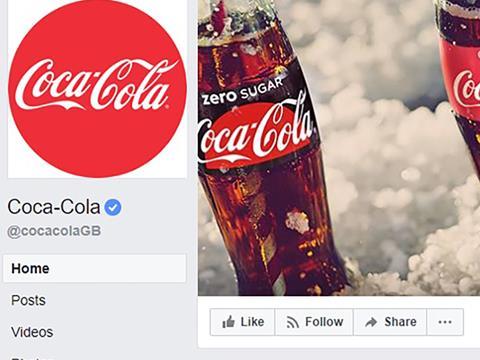
1. Coca-Cola
The UK’s biggest brand struggled to grow its Facebook fanbase in 2017 adding only 14,000 people (an increase of less than 1%) to its 2.5 million UK followers. Quantity over quality might be one reason, suggests analysis by Socialbakers, with 153 posts by the brand attracting interaction from only one in 10 followers on average, a sign that posts on sustainability and NPD fail to hit the spot.
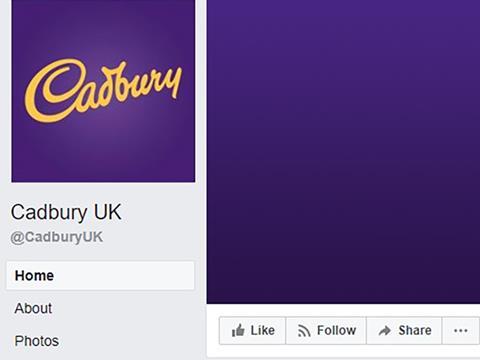
2. Cadbury UK
With less than a million in its Facebook following (795,000) Cadbury only grew its reach on the platform marginally in 2017 by (71.9k people). Unlike Coca-Cola though, the brand has a highly engaged audience on the channel with interactions from more than 50% on average per post, despite only posting 48 times, with content focused on recipes, giveaways and competitions.
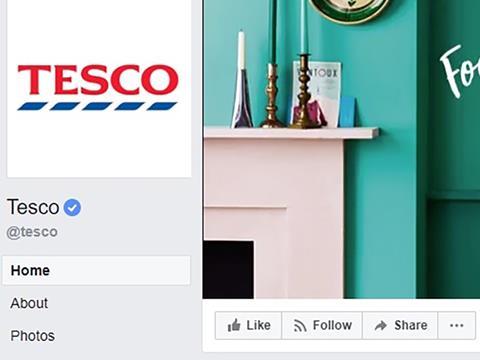
3. Tesco
Social was clearly core in Tesco’s strategy in 2017 with its Facebook fanbase growing nearly a quarter of a million people, and more than half of its posts paid for, according to Socialbakers, rather than organic. That investment paid off, with 67% of its total interactions from fans over the year coming from that paid-for content and a response from 10% of its fans on average per post.
Source: Socialbakers
That’s because “despite appearances, we still spend huge amounts of our days doing things that traditional advertising channels can reach with real impact,” says Graemer. “For brands that want to strengthen and build perceptions and achieve long-term success, they’re generally an essential part of the media mix.”
In fact, looking at the effectiveness of channels across five core areas (targeting capabilities, ROI, triggering emotion, increasing brand salience and reach) research from Ebiquity in March found TV came out top, followed by radio, print and OOH, with online the weakest performer. Even with its unprecedented access to user data, social media platforms still came second to radio on targeting consumers in the right place, at the right time, the research found, despite the perception of agencies that the traditional media would perform far more poorly. ‘Traditional media are undervalued by advertisers and agencies,’ said the report. ‘Conversely, advertisers and agencies notably over-rated the performance of online video and social media.’
“TV and other traditional media still has a really strong effectiveness story,” adds Nairn. “TV still generates huge numbers that many online campaigns could only dream of. The onus is on some of the other platforms to catch up with that and apply the same rigour.”
Not that the divide between digital and traditional is always straightforward, points out Jon Evans, marketing and business development director at Lucozade Ribena Suntory. “Audio-visual is the most powerful way of reaching our consumers but then there’s a massive blurring of lines with digital on how that’s consumed.” In 2017 its 90-second Lucozade Sport TV ad featuring Anthony Joshua was aired five times on TV, for example, but viewed 25 million times online. “I think the lines are more blurred than ever before.”
Integrated channel approach
Ultimately the key to any successful marketing campaign is blending the new opportunities of digital with the tried and tested results of traditional channels anyway, believes Davidson. “The mistake is not to have an integrated channel approach. All the data I’ve seen over the years shows that integration of channels, with a mix of digital and traditional media, pays back more than low or solo use of channels. If people are chasing digital because it’s new rather than because it has a role in an integrated approach, they’re missing a trick.”
Which is just as true if they’re allowing recent events to put them off dabbling in digital full stop. “Relying too heavily on the tried and the trusted will seriously limit your impact, and to make the most of the current marketing environment requires a significant shift in mindset and approach,” says Ostler.
“Every channel has a part to play in delivering against a campaign’s objectives, and channel choice should be based on strategy, and seek to maximise synergy effects across channels.”
In that environment undoubtedly “digital is becoming less of a helpful term,” adds Nairn. But against a backdrop of bots, brand safety concerns and ethically dubious big data, the question still remains, “in a world where everything is digital, how do you apply the same standards of rigour and not just jump into the latest, shiniest platform without really scrutinising what you’re getting for your money as an advertiser?”










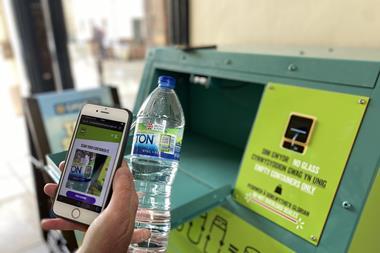
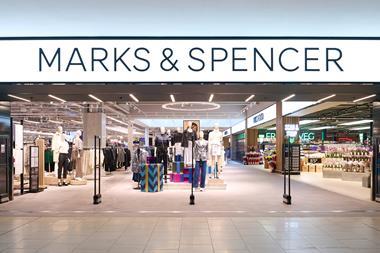
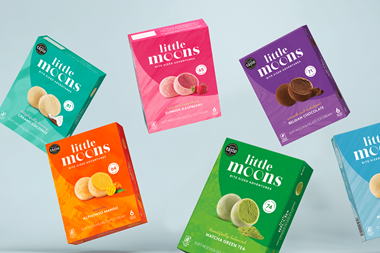






No comments yet